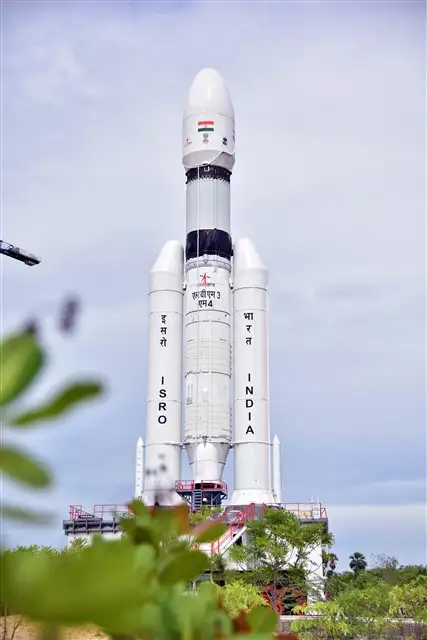Report by Shuchi Giridhar
At 2:30 pm Indian Standard Time, on 14th July 2023, the Chandrayaan 3 Spacecraft lifted off on its quest to execute a controlled landing on the Moon. It was launched from the Satish Dhawan Space Centre in Sriharikota.
The Chandrayaan 3 spacecraft is an attempt by India to become the fourth country in the world to execute a soft moon landing. The first three countries to execute a perfect moon landing were USA, Russia and China.
The Indian Space Research Organisation(ISRO) confirmed that the Chandrayaan 3 is in precise orbit and in healthy condition. The craft is expected to land on 23rd August.
Chandrayaan 3 will cover 300,000 kilometers (186,411 miles) to successfully reach the moon. It was developed by the Indian Space Research Organisation and comprises of a lander, propulsion module and rover. The lander will help the Chandrayaan 3 to execute a perfect landing and the rover will then explore the moon’s surface.
Indian Engineers and Scientists have been working on the Chandrayaan 3 for years and have engineered it to land near the challenging terrain of the moon’s South Pole. The aim of the spacecraft is simple – a safe landing on the moon’s surface, collection of data and discovery of the composition of the Moon through multiple science experiments.

Chandrayaan I and Chandrayaan II
The first spacecraft in the series – Chandrayaan 1, was launched on October 22nd, 2008. It was meant to crash into the lunar surface. It carried Moon Minerology Mapper (M3), an imaging spectrometer. This spectrometer helped confirm the discovery of water locked in minerals on the Moon.
Chandrayaan 2 was launched in 2022. It was supposed to explore the South pole of the Moon. Soft landing was part of the agenda. However, while the orbiter was set in place perfectly, in its last minutes, the lander lost communication with the ground stations. Later, it was confirmed that that lander and rover had been destroyed in the crash landing on the moon.
Since the South Pole of the moon is on the dark side of the moon, where sunlight does not usually reach, it is hard to land in this region.
Why is landing on the moon tough?
Landing on the moon is extremely tough. But why is it so?
Well for one, the moon does not exactly have an atmosphere. To explain, the atmosphere is like a pocket of air surrounding the Earth. Having an atmosphere around the moon would help create drag and provide stopping force. This in turn prevents the spacecraft from having a crash landing.
Another tough aspect is to navigate the moon’s surface to have a perfect landing. There are no navigational satellites near the moon so it makes it really hard to find the surface and detect the exact distance from the spacecraft to the surface so that the spacecraft could have a perfect landing.
What happened with Chandrayaan 2 could also happen where the spacecraft loses communication with the ground stations and crashes into the surface.
The path for the Chandrayaan 3 has been determined to be a successful one. After reaching the Earth’s orbit, the spacecraft will start performing a series of manoeuvres to get out of the gravitational field of the earth. It will then proceed to slingshot towards the moon and will again perform a series of manoeuvres to reach an orbit of about 100 × 100km. Then, the lander containing the rover will separate from the propulsion module and proceed to land. Survive for one lunar day as it cannot bear the cold of a lunar night. One Lunar day is fourteen Earth days. So, it will have to land exactly at dawn.
You know the saying, always learn from your mistakes and prevent them from happening again. Now let’s see what has been modified in the Chandrayaan 3 to ensure success and prevent mistakes of its predecessors.
• Instead of being designed to gain success like Chandrayaan 2, Chandrayaan 3 has been designed to prevent failure.
• The landing space has been expanded from a 500 m to 500m patch of land to anywhere around a 4 km to 2.4 km area.
• It has been fed pictures from Chandrayaan 2 to determine a spot for landing.
• It has been given extra fuel to reach the landing site or if needed, find a new landing site.
The Chandrayaan mission for the third time has started out perfectly. There are many more hurdles ahead till it reaches the moon. Now, it is up to us to wait and watch, hoping for the best to come.


